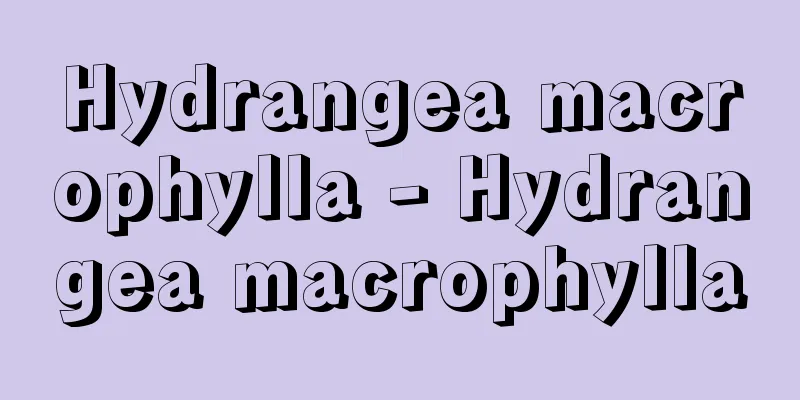Chymotrypsin

|
It is one of the serine proteases (proteolytic enzymes) found in the pancreatic juice of vertebrates. It was thought that there were three isoenzymes, A, B, and C, but A and B are now considered to be the same, and C is classified as a separate enzyme. C has a broader specificity than A. So far, bovine chymotrypsin A has been well studied. It is produced in the pancreas as a precursor chymotrypsinogen A of 245 amino acid residues, and in the small intestine, the two dipeptides Ser 14 -Arg 15 (seryl-arginine) and Thr 147 -Asn 148 (threonyl-asparagine) are cleaved by trypsin and existing chymotrypsin to produce α (alpha)-chymotrypsin with 241 residues and a molecular weight of 25,310. The three polypeptide chains 1-13, 16-146, and 149-245 are connected by disulfide bridges (S-S bridges). The intermediate stages of activation to α-chymotrypsin are named π-, δ-, and γ-, and have the same activity. There is another slow activation process. The optimum pH is 8.0, and the isoelectric point is 8.1-8.6. In 1967, the three-dimensional structure (tertiary structure) was determined by X-ray crystallography. The molecular shape is a spheroid with dimensions of 40 x 40 x 51 angstroms (Å). There are few α-helices (one of the stable helical structures that a polypeptide chain can adopt), and there are many anti-parallel β-pleated structures. It was previously believed that the peptide bond (-CO-NH-) was hydrolyzed (cleaved) by the cooperative action (charge-relay system) of the side chains of three amino acids in the active site: histidine His-57, aspartic acid Asr-102, and serine Ser-195. However, it has been revealed that there is no hydrogen bond between His-57 and Asp-102, and His-57 can also have a proton dissociation equilibrium near neutrality, and that Asp-His-Ser does not function as a charge-relay system. It is now believed that Asp-102 and His-57 in the active center of serine proteases act as acid-base catalysts that abstract the proton from the hydroxyl group of Ser-195 and transfer the proton to the substrate, and Ser-195 attacks the carbonyl carbon of the substrate to cause acylation. The Asp-His system in this process is also called the proton-relay system. Chymotrypsin has specificity for cleaving peptide bonds on the carbonyl (C=O) side of aromatic amino acids such as tyrosine, phenylalanine, and tryptophan, and also on the hydrophobic aliphatic amino acids such as leucine and isoleucine, and also cleaves amide and ester bonds. It is irreversibly inhibited by DFP (diisopropylfluorophosphate), PMSF (phenylmethanesulfonyl fluoride), and TPCK ( N -tosyl-L-phenylalanyl chloromethyl ketone), which are common inhibitors of serine enzymes. However, DFP is no longer used in experiments because it is a neurotoxin. It is also inhibited by chymostatin, which is produced by actinomycetes, but this also inhibits thiol (SH) enzymes such as calpain, papain, and cathepsin B, so its specificity is low. It is thought to have evolved from the same ancestral gene because its structure is similar to trypsin and elastase, which are also enzymes in pancreatic juice, but its specificity is different. [Koji Nomura] [References] | | | | | | | | | | | | | | | | | | | | | | | |Source: Shogakukan Encyclopedia Nipponica About Encyclopedia Nipponica Information | Legend |
|
脊椎(せきつい)動物の膵液(すいえき)中にあるセリンプロテアーゼ(タンパク分解酵素)の一つ。アイソザイム(イソ酵素)としてA、B、Cの3種があるとされてきたが、いまではAとBは同一とされており、Cは別の酵素に分類されている。Cの特異性はAよりも広い。これまでウシのキモトリプシンAがよく研究されている。膵臓でアミノ酸245残基の前駆体キモトリプシノーゲンAとしてつくられ、小腸に至って、トリプシンと既存のキモトリプシンによって、二つのジペプチドSer14-Arg15(セリル‐アルギニン)およびThr147-Asn148(トレオニル‐アスパラギン)が切り離され、241残基、分子量2万5310のα(アルファ)-キモトリプシンとなる。三つに切れたポリペプチド鎖1-13、16-146、149-245はジスルフィド架橋(S‐S架橋)でつながれている。α-キモトリプシンに活性化される途中の段階のものは、それぞれπ(パイ)-、δ(デルタ)-、γ(ガンマ)-などの名称がつけられており、同等の活性をもっている。別の遅い活性過程もある。至適pH(ペーハー)は8.0で、等電点は8.1~8.6である。1967年、X線結晶解析によって立体構造(三次構造)が決定された。分子の形は回転楕円(だえん)体では40×40×51オングストローム(Å)の大きさである。α-ヘリックス(ポリペプチド鎖がとりうる安定な螺旋(らせん)構造の一つ)が少なく、逆平行β(ベータ)-ひだ状構造anti-parallel pleated sheetが多い。 これまで活性部位にあるヒスチジンHis-57、アスパラギン酸Asr-102、セリンSer-195の三つのアミノ酸の側鎖の共同作用(電荷伝達系charge-relay system)によってペプチド結合(-CO-NH-)が加水分解(切断)されると考えられてきたが、His-57とAsp-102の間には水素結合はなく、His-57も中性付近にプロトン解離平衡をもつことがあることが明らかになり、Asp-His-Serは電荷リレー系としては働かないことが明らかになった。現在では、セリンプロテアーゼの活性中心にあるAsp-102とHis-57がSer-195のヒドロキシ基のプロトンを引き抜き、そのプロトンを基質に渡す酸塩基触媒として働き、Ser-195は基質のカルボニル炭素を攻撃してアシル化がおこると考えられている。この過程のAsp-His系はプロトンリレー系ともよばれている。 キモトリプシンは、チロシンやフェニルアラニン、トリプトファンなどの芳香族アミノ酸や脂肪族でも疎水性の高いロイシン、イソロイシンなどのカルボニル(C=O)側のペプチド結合をよく切る特異性をもち、アミドやエステル結合も切断する。セリン酵素に共通な阻害剤のDFP(ジイソピルフルオロリン酸)、PMSF(フェニルメタンスルフォニルフルオリド)、TPCK(N-トシル-L-フェニルアラニルクロロメチルケトン)などで不可逆的に阻害される。ただし、DFPは神経毒なので実験には使われなくなっている。放線菌がつくるキモスタチンでも阻害されるが、これはカルパイン、パパイン、カテプシンBなどのチオール(SH)酵素も阻害するのでその特異性は低い。同じ膵液の酵素であるトリプシンやエラスターゼと構造が似ているので、同じ祖先遺伝子から進化したものと考えられているが、その特異性は異なっている。 [野村晃司] [参照項目] | | | | | | | | | | | | | | | | | | | | | | | |出典 小学館 日本大百科全書(ニッポニカ)日本大百科全書(ニッポニカ)について 情報 | 凡例 |
<<: Kimono Sleeve - Kimono Sleeve
Recommend
Kuawase - Kuawase
In this contest, two haiku are lined up side by s...
Sales management - Hanbaikanri (English) sales management
A field of corporate business management, it refe...
Altweibersommer
…It doesn't occur every year, but it tends to...
Hercules (legend) (English spelling) Hercules
…His name means "the glory of the goddess He...
Cao Shi - Zoshi
〘Noun〙① In the Nara and Heian periods, a main offi...
Choi Yong-Keun - Saiyouken
North Korean politician. Born in Taecheon County,...
Cordyceps nutans (English spelling)
…[Tsubaki Keisuke]. . . *Some of the terminology ...
Sakuragawa Jihinari - Sakuragawa Jihinari
A comic writer from the late Edo period. His real...
Yasutomi [town] - Yasutomi
A former town in Shiso District, central-western H...
Taş köprizade Ahmed
1495‐1561 A scholar from the Ottoman period. Born ...
Caribbean
…It consists of numerous islands that circle the ...
Nakai Riken
A Confucian scholar of the late Edo period. Born ...
Decapoda
…A general term for the group of animals belongin...
Ureibushi - Ureibushi
...This was a transitional phenomenon, as no dist...
Strait of Hormuz
A strait that connects the Persian Gulf, where oil...









